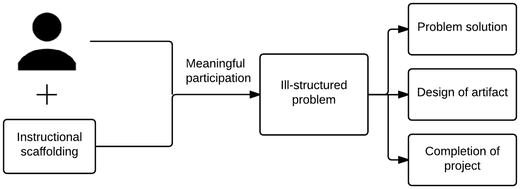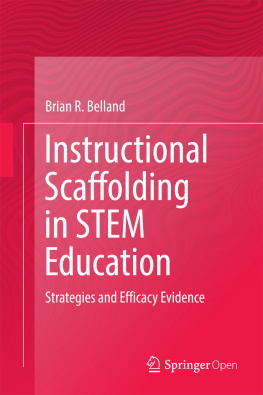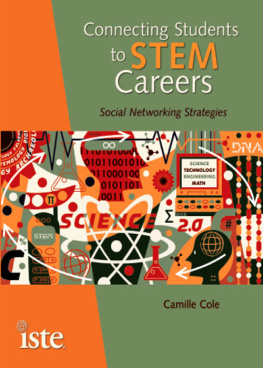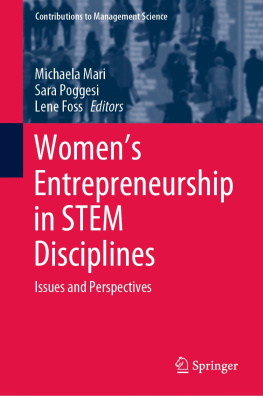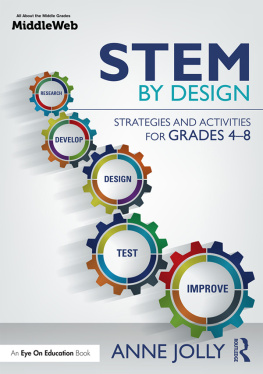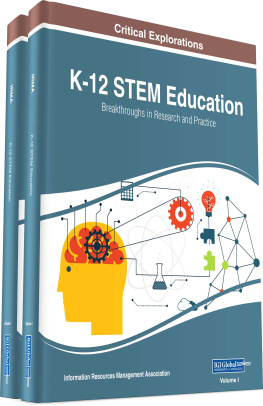1. Introduction
Abstract
In this chapter, I describe the call for the use of problem-centered instructional approaches in science, technology, engineering, and mathematics (STEM) education. I note the rationale for this bookspecifically that it allows me space to explain the theoretical background of scaffolding and to explore the theoretical implications of a meta-analysis of computer-based scaffolding in STEM education that I completed with colleagues. I also posit instructional scaffolding as an intervention that extends students capabilities as they engage with the central problem in problem-centered instructional approaches. I note the difference between one-to-one, peer, and computer-based scaffolding, and articulate that in this book I synthesize research on computer-based scaffolding in STEM education. Finally, I outline the structure of the book.
1.1 Why Write a Book on Computer-Based Scaffolding in STEM Education?
In the most widely read and highly cited article of Educational Psychologist , Kirschner, Sweller, and Clark (). That problem-centered instruction fares well when it comes to deep content learning and principles and application outcomes is well-established. But the effectiveness of various computer-based scaffolding strategies is less well understood. That is the need that this book, and the underlying meta-analysis project, sought to address.
While meta-analyses and meta-syntheses have established convincing evidence bases in support of the effectiveness of problem-centered instructional models, such syntheses of empirical research on instructional scaffolding are an emergent phenomenon (Belland, Walker, Kim, & Lefler, ).
Instructional scaffolding is an essential tool to support students during problem-centered instruction (Belland, Glazewski, & Richardson, , p. 8).
The use of computer-based scaffolding paired with problem-centered instruction has emerged as a common and valued approach in science education (Crippen & Archambault, ) .
For many meta-analysts, reading the journal article in which my colleagues and I reported our meta-analysis is enough as it reports methodology, coding process, tests for heterogeneity, inter-rater reliability, and other important meta-analysis details (Belland et al., ). However, as any researcher knows, the amount of theoretical background and practical details that one can fit into one journal paper is often woefully inadequate as there simply is not enough space. Writing a book allows one to have adequate space for important theoretical background and practical details. Thus, scaffolding designers and STEM education researchers and instructors may find this book to be particularly useful as they consider how to design scaffolding and the nature of coding categories used in the meta-analysis. Meta-analysts may also find the book to be useful as they consider how coding categories were defined in the underlying meta-analysis.
1.2 What This Book Covers
This book focuses on computer-based scaffolding in STEM education its definition and theoretical backing, how it has been applied in STEM education, evidence of its effectiveness, under what conditions computer-based scaffolding is most effective, and which scaffolding characteristics lead to the strongest cognitive outcomes . The use of computer-based scaffolding paired with problem-centered instruction is neither new to nor limited to STEM education (Belland, ).
While the underlying meta-analysis did not include studies from outside of STEM education, there is material in this book that is pertinent to scaffolding in education areas other than STEM. These include the conditions under which scaffolding is used and the characteristics often present in scaffolding. However, findings about conditions under which scaffolding is most effective, student populations among whom scaffolding is used, and which scaffolding characteristics lead to the strongest impact on cognitive outcomes may not apply in non-STEM education settings. Further research is needed to ascertain this. Where the material is not directly applicable, it may suggest avenues for future research to better understand the role of computer-based scaffolding in education in the humanities and social sciences. Such future research is every bit as important as research on scaffolding in STEM education to the preparation of a well-rounded citizenry who is capable of thinking critically and creatively about problems (Guyotte, Sochacka, Costantino, Walther, & Kellam, ).
1.3 Problem-Centered Instructional Approaches and STEM
Problem-centered approaches have been growing in importance in STEM education (AbdElKhalick et al., ).
Processes used in problem-centered instructional approaches can range from studying similar cases to extract solution principles and to subsequently adapt such to address the present problem (case-based learning; see Kolodner, Owensby, & Guzdial, ).
As one might guess, addressing ill-structured problems is not easy. For everyone except perhaps the most advanced experts, addressing ill-structured problems requires the use of unfamiliar strategies and the learning and subsequent use of much content knowledge (Giere, ).
1.4 Role of Scaffolding
When considering problem-centered approaches to instruction, a central question has been how one can provide the support that students need to succeed in this environment. One cannot expect to teach students all of the strategies and content that they need through lecture or other approaches ahead of students engagement with the central problem (Barrows & Tamblyn, ).
Fig. 1.1
The role of instructional scaffolding in solving ill-structured problems
Instructional scaffolding differs from other instructional support strategies and tools in terms of what students are intended to get out of it, the timing of the support, and the form of the support. First, scaffolding needs to support current performance but also lead to the ability to perform the target skill independently in the future (Belland, ). Without such struggle, productive learning from scaffolding cannot happen.
Scaffolding can be provided by teachers, computers, or peers (Belland, ). That is, the relative strengths and weaknesses of each can compensate for that of the others, forming a strong network of instructional support for students.
1.5 Central Premises Behind This Book
A central argument of this book is that a systematic synthesis of research on computer-based scaffolding across STEM education is warranted so as to allow researchers and instructors in different disciplines to benefit from research done in other fields. Three premises of the argument are (a) that it does not make sense to continually create from scratch scaffolding strategies when endeavoring to support students in new situations, (b) there is far too much empirical work on scaffolding in STEM fields to make sense of what works best in what circumstances without the use of meta-analysis or other comprehensive synthesis methods (e.g., meta-synthesis), and (c) it makes sense to synthesize research on scaffolding based in different theoretical traditions and used in the context of diverse instructional approaches. I discuss and support these premises in the paragraphs that follow.
